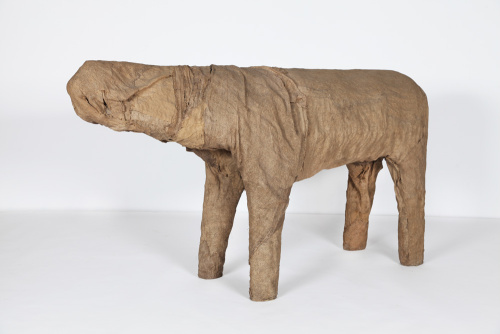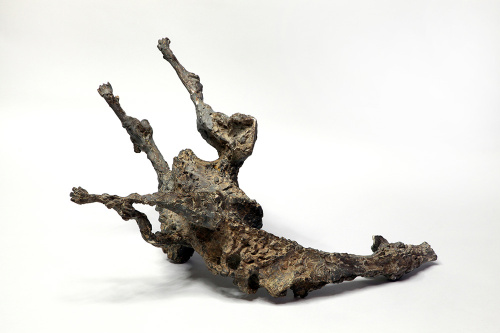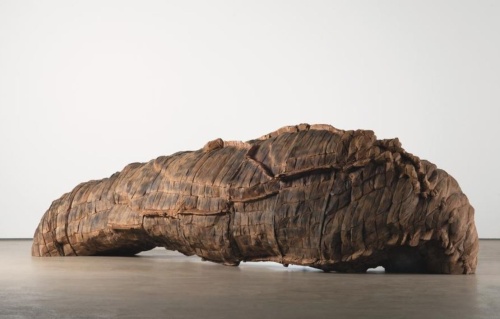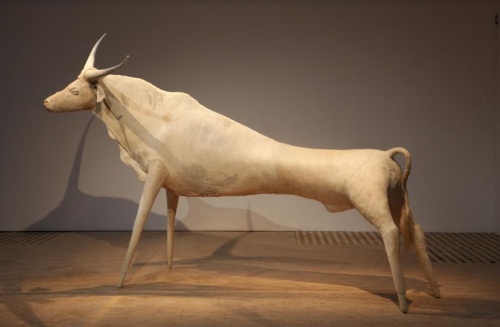The exhibition „Fantastic Animals“ from the collection of the Centre of Polish Sculpture in Orońsko
Wroclav January27, 2023
Mr Andrzej Kosendiak, Director of the National Forum of Music in Wrocław, and Mr Maciej Aleksandrowicz, Director of the Centre of Polish Sculpture in Orońsko, request the honour of your presence at the opening of the exhibition Fantastic Animals presenting works from the collection of the Centre of Polish Sculpture in Orońsko, on 3 February 2023 at 6 pm in the NFM foyer (pl. Wolności 1).
The exhibition will be open from 3 February to 16 April 2023. Admission is free. During the concerts of external organisers, the exhibition will be open to holders of tickets for these external events.
Works by the following artists will be featured: Magdalena Abakanowicz, Paweł Althamer, Plamen Bratanow, Mieczysław Chojnacki, Bronisław Chromy, Beata Czapska, Anna Dębska, Mitek Dinev, Zbigniew Dudek, Jerzy Jarnuszkiewicz, Jumber Jikia, Anna Kamieńska-Łapińska, Marek Kijewski, Jolanta Kłyszcz de Kentros, Józef Kopczyński, Tadeusz Koper, Michał Leszczyński, Sławomir Lewiński, Władysław Pawlik, Andrzej Pawlowski (Pawłowski), Adam Procki, Anna Rodzińska-Iwańska, and Ursula von Rydingsvard.
Fantastyczne zwierzęta
Fantastic Animals
Wystawa prac z kolekcji Centrum Rzeźby Polskiej w Orońsku
Sculpture exhibition from the Centre of Polish Sculpture in Orońsko
3.02.2023–16.04.2023
foyer NFM

Wrocław, plac Wolności 1
Kurator / Curator: Maciej Aleksandrowicz
Współpraca / Cooperation: Stanisław Małecki
Wernisaż exhibition opening:
3 lutego February 2023, 18.00 6 pm
foyer NFM
Magdalena Abakanowicz
Paweł Althamer
Plamen Bratanow
Mieczysław Chojnacki
Bronisław Chromy
Beata Czapska
Anna Dębska

Mitko Dinev
Zbigniew Dudek
Jerzy Jarnuszkiewicz
Jumber Jikia
Anna Kamieńska-Łapińska
Marek Kijewski
Jolanta Kłyszcz de Kentros
Józef Kopczyński
Tadeusz Koper
Michał Leszczyński
Sławomir Lewiński
Władysław Pawlik
Andrzej Pawlowski (Pawłowski)
Adam Procki
Anna Rodzińska-Iwańska
Ursula von Rydingsvard
Fantastic Animals

von Rydingsvard Ursula, Ocean Voices, 2011-2012 fot. Jan Gaworski
Nature is the source of civilization, as it feeds us and our imagination. For long millennia, its rules have been our order, and we still depend on it and its resources. But now we realize we have almost destroyed it completely. We have also lost our inner world of myth and imagination. In the past, we thought of animals as beings with character, traits similar to our own, and even a soul. To this day, these are the ideas cultivated by some peoples and tribes living close to nature – the residues of the natural state of affairs. We discover traces of this world in many prehistoric cultures, where animal shapes were reserved for gods, imagined as human-animal hybrids. The old myths are filled with animal-like heroes representing the most primeval world that has been taken over by humans, but still sends out fauns, bulls, and swans to keep in constant contact with us. The traces of those characters have remained in fairy tales. Folk wisdom, oral history, repeated and modified for decades, has produced classic themes in which the animal, endowed with distinctive features, plays the role necessary to convey the moral message. Fairy tales are sometimes attempts to explain unusual, dramatic phenomena, crimes, hunger and violence. They are traces of ancient events. Sometimes animals are also actors’ masks, without which it was impossible to cope with phenomena that eluded logic and human ethics, too dramatic for the viewer. The world of fantasy is indispensable to us, not only in high-flying poetry. We can’t do without it on a daily basis.
The obvious anthropomorphizing of animals in literature, the construction of new metaphors and the use of established ones are not only the richness of language. These are the codes without which we will not be able to tell complex, non-obvious narratives. We will not express fear, hope, emotions and impressions. Without this kind of language, the word plays the subordinate role of instruction. Animals return in films, on emblems and in important books, sometimes representing sublime categories, sometimes fallen ones. We use animal metaphors in everyday speech, for example, we use the phrase “he acted like an animal” when we want to describe behavior characterized by wildness and unbridled demeanour. Animalistic imagination does not go well with the present, in which efficiency, usefulness and productivity are respected. So we remove it from our lives. What remains is art – a natural reserve of fantastic phenomena, metaphors, myths and fairy tales. Imaginary animals are the heroes of immature and non-modern worlds, without whom our lives are incomplete.
Sculpture tells a story differently than literature, shows it differently than painting. At the exhibition we present imaginary animals without any context or background. Lonely and exposed individuals. They are heroes torn out of old, forgotten stories. We invite you to recreate their history, to reconstruct myths, legends and fairy tales about them. Without this effort, the fantasy world disappears.
Maciej Aleksandrowicz PhD

